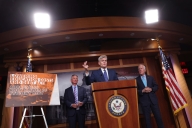You have /5 articles left.
Sign up for a free account or log in.
The Johns Hopkins Center for Health Security, the Council for Higher Education Accreditation and Tuscany Strategy Consulting have collaborated to create a free resource to guide colleges on how to open campuses safely in the future.
OpenSmartEdu.net includes planning tools like self-assessments and resources like a fall announcement tracker.
Most colleges and universities are facing challenges due to the COVID-19 pandemic, including concerns about when to reopen campuses. Some are committing to a virtual fall, others are opening with social distancing policies and still others are changing semester schedules to send students home at the time when a second wave of infection is anticipated.
The guide is intended to address concerns for many institutions, including those that are private, public, large, small, urban or rural, according to a release.
To continue operating during this global health crisis, the authors write, college leaders must start with four guiding principles.
The first is to acknowledge the aspects of higher education that will benefit from being reimagined to address the pandemic. Second, leaders should consider the health and safety of all members of the community above all else, with special attention to vulnerable populations.
Third, they must remain committed to academic excellence, no matter what modality they use in the fall.
Lastly, leaders must respond in ways that support everyone in their communities. This necessitates a focus on equity and inclusion.
The guide focuses on core central planning questions, including whether institutions have enough health and safety materials and protocols to address COVID-19 challenges, whether they have enough money to address those challenges, if they have developed a quality academic program for the year, and if they have the necessary management and oversight capabilities to manage through the pandemic.
"Retooling for the future, with urgency, involves a significant planning effort to manage the present environment as well as the opportunity to envision new ways to fulfill institutional missions. Plans need to address the safety of students, faculty, and staff, the financing of our colleges and universities, and preservation of equity and diversity," the authors of the guide wrote. "They will also need to address short- and long-term investment in academic tools that will be essential for education in the period of COVID-19 -- adding instructional and enterprise technologies, expanding the range of capabilities of faculty, improving the nature of the curriculum, and strengthening the network of student support. We encourage leadership and planning committees to use this opportunity to set their institutions on new pathways supporting academic excellence, health, and equity."




